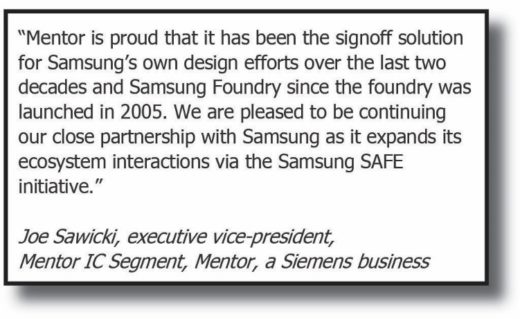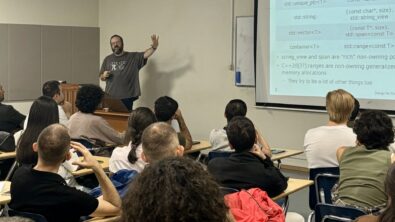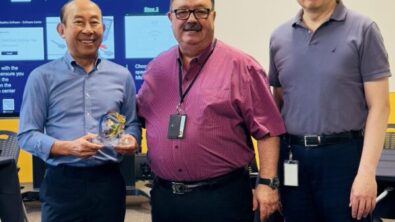Samsung and Mentor getting headlines with innovative fast LFD using machine learning
By Shelly Stalnaker – Mentor, A Siemens Business
Tom Dillinger, editor at SemiWiki, recently attended the Samsung Foundry technology forum in Santa Clara. In his review of the event, he called out the Samsung/Mentor collaboration incorporating machine learning into a fast litho-friendly design (LFD) process as “extremely innovative” and “very cool.”
Before we tell you exactly what he said, here’s a (very) brief description of the technology:
 Our fast LFD flow with machine learning (ML) selects simulation regions based on the locations predicted by a trained ML model. The ML model learns from a pre-determined set of hotspots and non-hotspots to identify unknown patterns as potential hotspots. The selection of the simulation region is a binary classification problem—any layout pattern is classified into either a potential hotspot or a non-hotspot using an ML model. In addition to the ability of the trained ML model to identify previously known hotspots used in training the model, its main strength is its ability to predict new hotspots that have not been seen in prior designs.
Our fast LFD flow with machine learning (ML) selects simulation regions based on the locations predicted by a trained ML model. The ML model learns from a pre-determined set of hotspots and non-hotspots to identify unknown patterns as potential hotspots. The selection of the simulation region is a binary classification problem—any layout pattern is classified into either a potential hotspot or a non-hotspot using an ML model. In addition to the ability of the trained ML model to identify previously known hotspots used in training the model, its main strength is its ability to predict new hotspots that have not been seen in prior designs.
In our experiments, the ML fast LFD flow was very accurate in predicting litho hotspots. For critical hotspots, ML fast LFD accuracy approaches 100%, even for new critical hotspots that were not part of the model training data.
So, what did Tom have to say?
“Samsung Foundry also briefly described their “SAFE” program (Samsung Advanced Foundry Ecosystem), listing 16 EDA partners, 27 IP providers, and 27 design services solutions partners to assist customers…”
“When describing the recent collaboration with the EDA vendors, there was one example presented that caught my attention. There’s been a lot of discussion on “how would machine learning principles apply to EDA algorithms” – an example was presented that I thought was extremely innovative. The mask house currently employs a sophisticated set of Source-Mask Optimization (SMO) algorithms to realize a printable mask. There is a risk that a layout topology may be unresolvable during SMO analysis. Although the goal is to exclude any problematic layout topologies as part of the DRC design rule checking runset, the foundries have introduced the additional requirement for designers to execute a Lithography Process Checking (LPC) flow. Initial LPC product releases integrated both model-based and pattern matching-based algorithms, to explore the layout for potential issues. The model-based analysis is comprehensive but very computationally expensive. The pattern matching approach is fast, but is “reactive”, in that it relies upon a set of patterns that have previously been identified. Samsung Foundry and Mentor Graphics have integrated a set of algorithms into Calibre LPC that apply machine learning techniques to extend the scope of “litho hot spot” layout analysis beyond the provided pattern library, without the computational complexity of detailed model-based analysis – very cool.”
Thanks, Tom – we think so, too! In fact, we wrote a white paper (based on the original conference paper cited in SemiWiki) that explains just how the machine learning process works, and what the full results of our experiments were. To download your copy, click here! Read the white paper and still have questions? Contact a Calibre representative for answers!



